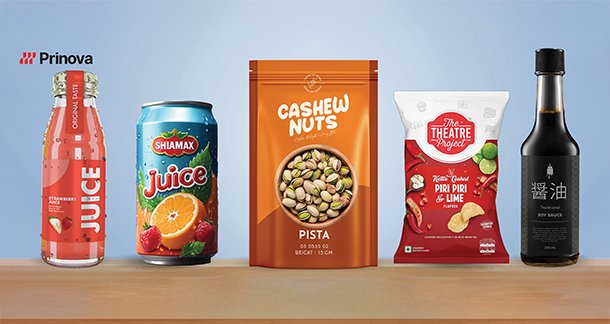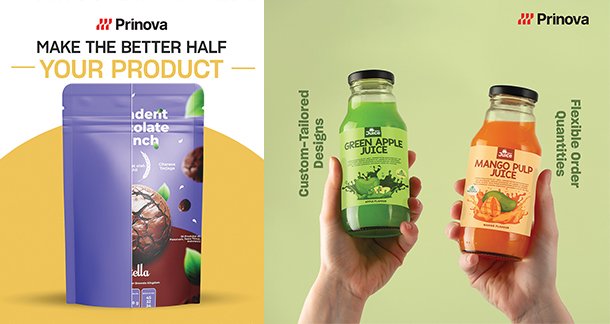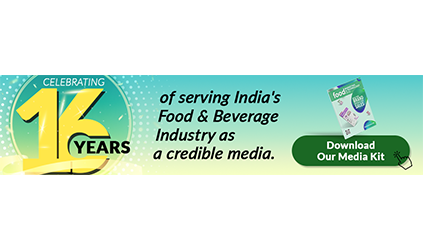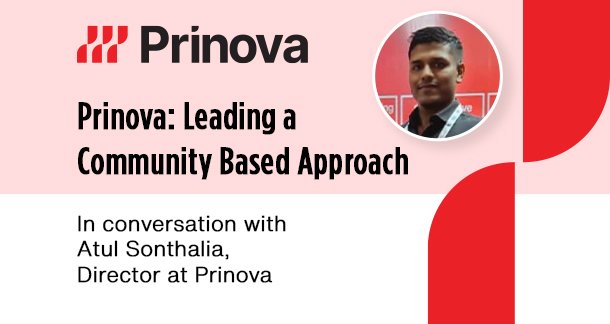In conversation with Atul Sonthalia, Director at Prinova, we explore the challenges in the packaging Industry, growth of Indian manufacturing, using a community based approach to continuously grow, and more.
Question– Being in the industry for so long, you must be privy to the ins and outs of the industry by now. What are some of the challenges that you still face to this day and how do you go about tackling them?
There are challenges when you are not able to judge and determine whether a product is authentic and it is from the person who claims to have made the product. In India, this has become a concerning issue. So, I think one of the challenges that we face today is how do we educate the end consumer . To be aware of something like this and to essentially check and make sure that you are continually engaging with the end consumer, you are able to solve a lot of probems.
Another transition is that the industry is trying to move towards sustainability in production processes, use of materials, reducing, reducing wastage, and more. A challenge that comes from it is maintaining consistency in your materials which a lot of vendors and suppliers are doing a great job at along with coming up with something that works really well for the end customer. A lot of start ups are coming on board. Everybody’s starting a new food and beverage brand. One of the big challenges that they face is getting their quantities. It is difficult for a larger setup to be able to supply smaller quantities to a wide range of companies and players in the industry effectively. Off late, there has been a rise in digital printing, digital packaging, and flexible pouches. It is an effective way to combat that sort of challenge that brands face today.

Question- What domains do you cater to and what approach do you use for packaging and development?
As a company, we try to have a very holistic approach on packaging and development. So, when we work with clients, we work with them at even a grassroot level with them coming and pitching the crux of their ideas to us.
We want to develop packaging from scratch. We want the design, select the material, develop the entire packaging that is delivered in, and we want it produced and sent to us. So, we have development packages that do the whole thing. We also work with brands where they directly they come and tell us their designs.
We also cater to a bit of consultation with some clients, where we are explaining to them what to do. These are generally startups and younger clients that are growing very fast and are trying to understand what is available in the industry and what they can actually use.
Question- As a company that provides services based on consumer specifications, how does Prinova keep upskilling themselves and develop the brand?
In the industry, everyone is an active stakeholder. From your vendors, suppliers to more, all of them are friendly and easy to converse with. All our vendors, material vendors, machine vendors, ink vendors are very supportive in sharing knowledge and research developments. This makes half the work easier and it is with constant space that allows for such engagement that we are fortunate enough to grow at the rate that we do and constantly learn new ways to navigate the Industry.
We try to have a “Community Approach” where, if we notice a gap in the Industry while discussing something with a client, we bring in the necessary people or the necessary agencies who can bridge that gap. Hence, at the end of the day, we ensure to deliver to the end consumer what they aspire to receive in the first place.
Question– How do you source materials for packaging? What challenges do you face?
There are a lot of MNCs that we work with who are material vendors, who either have their own units in India or they have distributors that they work with. The bulk of it is not manufactured in India directly.
There is a lapse in India when it comes to things like eco-friendly materials, recyclable materials, and compostable materials. They are available but expensive. India is a very price sensitive market so it does not move much here. So, your distributors and other agencies do not have much incentive to actually purchase the material, bring it, and hold it.
Your lead times when it comes to materials, are much longer because you have to import them every single time. You do not have stock in India and the cost is higher because you are not getting that volume advantage anymore because a small fraction of the Industry is using this material. There is a small lapse here but it is slowly bridging. Apart from some luxury materials materials from Europe, most of our vendors manufacture in India.

Question– What trends have you noticed in 2024?
There is a trend of customization. Today, consumer loyalty is on a decline. Back in my father’s generation, you would not change the soap you purchased for 5 years. Today, you buy a new soap every single time you go for a purchase. There are so many options today. The ways of marketing the product is changing, the ways in which companies are advertising themselves is changing. So, I see a lot of people trying to customize their products to their target audience and I see this changing with the tastes and preferences of the target audience quite frequently.
A lot of companies are trying to look into more eco-friendly options and solutions. I have seen this trend with a lot of brands.
People are trying to be a little bit more conscious about where the materials are coming from, reducing theirwastage, carbon footprint, and generally being more environmentally conscious.
Many start ups and brands are establishing themselves today and they are coming out with exciting new innovations, adding more growth to the Indian Market. There is tremendous space in the market to incorporate everyone and provide more opportunities to make the Industry grow.
Lastly, a common trend that I have noticed with established brands is the problem of counterfeiting, where people try to sell a product under somebody else’s name, or they try to counterfeit somebody else’s name and try to sell a product. The relatively bigger and more established brands have to deal with this problem which has become more common in today’s time. We are however also seeing a culture that is investing in technologies that can ensure that. It would just require a little bit of consumer education to move in the right direction.
Question– What trends do you see in 2025 and what are Panova’s plans for this year?
I believe the 2024 trends are going to go on for a long time especially, when it comes to brand protection. I think the awareness is really growing today. There are a lot brilliant software companies. We work with some of them and they help us find solutions to protect our brand.
This is going to arch into a big trend in 2025 specially because it is a problem in India. We have been in the industry for about two years. We have studied a lot of trends and have cultivated a good understanding of our clients, what the industry wants, what brands look for particularly, and more. So, we have been gearing ourselves to be able to deliver exactly what these brands want in an efficient way. We are increasing our production capabilities as well because we have been getting a lot of inflow of orders now. So, we are expanding our capabilities and team so that we are able to provide great service to everybody.



